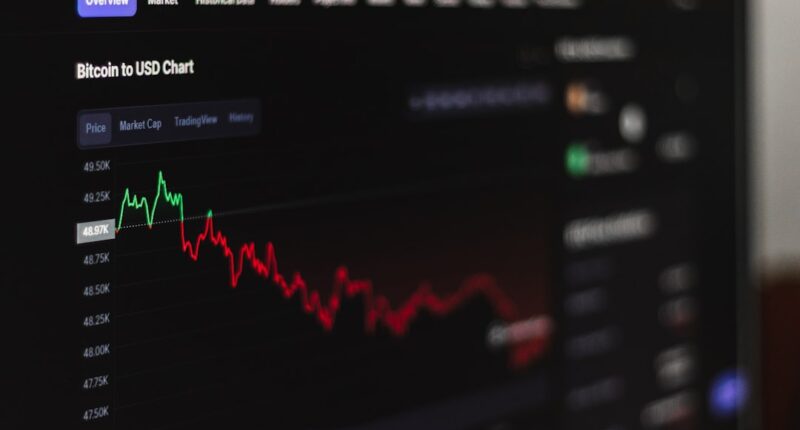The music streaming market has experienced significant growth in recent years, transforming how people access and enjoy music. The widespread availability of high-speed internet and smartphones has made music streaming the preferred method for music consumption. This shift has led to a major transformation in the music industry, with streaming services now dominating the market.
Music streaming platforms provide users with access to vast libraries of songs, enabling them to create custom playlists and discover new music easily. The convenience of these services has contributed to their widespread popularity, resulting in numerous platforms competing for market share. The rise of music streaming has significantly impacted artists and record labels, altering their approaches to music distribution and promotion.
As a result, the music streaming market has become highly competitive, with major companies vying for dominance. This article will examine the key players in the music streaming industry, analyze market share trends, and discuss strategies for music marketing and promotion in this dynamic landscape.
Key Takeaways
- The music streaming market is a rapidly growing industry that has revolutionized the way people consume music.
- Major players in the music streaming industry include Spotify, Apple Music, Amazon Music, and YouTube Music, among others.
- Spotify currently holds the largest market share in the music streaming industry, followed by Apple Music and Amazon Music.
- Strategies for music marketing and promotion in the streaming industry include playlist placement, influencer partnerships, and social media advertising.
- Music PR plays a crucial role in gaining market share by securing media coverage, interviews, and features for artists on popular platforms.
Major Players in the Music Streaming Industry
Key Features and Benefits
Each of the major players offers a unique set of features and benefits to users. Spotify, for example, is known for its user-friendly interface, personalized playlists, and extensive music library. Apple Music, on the other hand, integrates seamlessly with Apple devices and offers exclusive content to its subscribers. Amazon Music has gained traction through its integration with Amazon Prime, while YouTube Music leverages its massive user base and extensive video content to attract subscribers.
Enhancing User Experience
These major players have also focused on enhancing user experience through features such as curated playlists, personalized recommendations, and high-quality audio streaming. As a result, these platforms have amassed large subscriber bases and continue to dominate the music streaming market.
New Players and Intensifying Competition
However, new players such as Tidal and Deezer have also emerged, offering unique features and targeting niche audiences. As the competition intensifies, these major players are constantly innovating and expanding their offerings to maintain their market share.
Market Share Analysis of Music Streaming Platforms

The market share of music streaming platforms is a key indicator of their success and influence in the industry. As of [current year], Spotify leads the pack with the largest market share, boasting over [number] million paid subscribers worldwide. Its extensive music library, personalized playlists, and user-friendly interface have contributed to its widespread popularity.
Apple Music follows closely behind, with a significant share of the market due to its seamless integration with Apple devices and exclusive content offerings. Amazon Music and YouTube Music also hold substantial market share, leveraging their respective parent companies’ resources and user bases to attract subscribers. In addition to these major players, smaller platforms such as Tidal and Deezer have carved out their own niche in the market, catering to specific audiences and offering unique features.
While these platforms may not have as large a market share as the industry leaders, they play an important role in diversifying the music streaming landscape and providing options for consumers. As the market continues to evolve, it is likely that new players will enter the scene and existing platforms will adjust their strategies to maintain or increase their market share. Overall, the music streaming market is highly competitive, with each platform vying for a larger piece of the pie through innovation, partnerships, and strategic marketing efforts.
Strategies for Music Marketing and Promotion in the Streaming Industry
| Strategy | Description |
|---|---|
| Playlist Placement | Getting songs added to popular playlists to increase visibility and streams. |
| Engaging Social Media | Using platforms like Instagram, Twitter, and TikTok to connect with fans and promote music. |
| Collaborations | Working with other artists or influencers to reach new audiences. |
| Data Analysis | Utilizing streaming platform analytics to understand listener behavior and preferences. |
| Live Streaming | Hosting live performances or Q&A sessions to engage with fans directly. |
In the competitive music streaming industry, effective marketing and promotion strategies are essential for artists and record labels to gain visibility and attract listeners. With millions of songs available on streaming platforms, standing out from the crowd requires a targeted approach that leverages digital marketing tools and platforms. One key strategy is to optimize artist profiles on streaming platforms by providing high-quality images, engaging biographies, and regular updates on new releases and upcoming events.
This helps to create a strong brand presence and attract followers who are interested in the artist’s music. Another effective strategy is to utilize social media and digital advertising to reach potential listeners and drive traffic to streaming platforms. Platforms such as Instagram, Facebook, and Twitter offer powerful tools for targeting specific demographics and promoting music through sponsored posts, video content, and influencer partnerships.
Additionally, artists can collaborate with popular playlists on streaming platforms to feature their music and reach a wider audience. This can be achieved through pitching directly to playlist curators or using third-party playlist pitching services that specialize in connecting artists with influential playlists. Furthermore, engaging with fans through live streams, behind-the-scenes content, and interactive experiences can help build a loyal fan base and drive streams on music platforms.
Artists can also leverage data analytics provided by streaming platforms to understand listener behavior and preferences, allowing them to tailor their marketing efforts and content to better resonate with their audience. By implementing these strategies, artists and record labels can effectively promote their music in the competitive streaming industry and increase their visibility and market share.
The Role of Music PR in Gaining Market Share
Music PR (public relations) plays a crucial role in helping artists and record labels gain market share in the competitive music streaming industry. PR professionals work to build relationships with media outlets, influencers, and industry tastemakers to secure coverage for artists’ releases and events. This can include securing interviews, reviews, features, and placements in influential publications and blogs that reach a wide audience of potential listeners.
By generating positive press coverage and buzz around an artist’s music, PR efforts can help drive streams on music platforms and increase overall market share. In addition to traditional media outreach, music PR professionals also work to secure partnerships and collaborations that can elevate an artist’s visibility on streaming platforms. This can include securing placements on popular playlists, partnering with brands for sponsored content or events, or collaborating with other artists for cross-promotion.
These strategic partnerships can help artists reach new audiences and gain traction in the competitive streaming landscape. Furthermore, music PR professionals play a key role in managing crisis communications and reputation management for artists in the event of negative press or public perception. By effectively navigating challenging situations and maintaining a positive public image, PR professionals can help artists protect their market share and continue to grow their fan base on streaming platforms.
The Importance of Music Promo in the Competitive Streaming Market

Securing Playlist Placements for Maximum Exposure
Music promotion is essential for artists and record labels looking to gain traction in the competitive streaming market. Effective promotion not only increases an artist’s visibility but also drives streams on music platforms, ultimately contributing to an increase in market share. One key aspect of music promotion is securing placements on influential playlists on streaming platforms such as Spotify, Apple Music, and Deezer. Playlist placements can expose an artist’s music to a large audience of potential listeners who are actively seeking new music recommendations.
Data-Driven Insights for Targeted Promotion
Additionally, leveraging data-driven insights from streaming platforms can inform targeted promotional efforts that resonate with specific listener demographics. By understanding listener behavior and preferences, artists can tailor their promotional strategies to effectively reach their target audience and drive streams on music platforms.
Live Performances and Events: Creating Buzz and Driving Streams
Moreover, live performances and events play a crucial role in promoting an artist’s music on streaming platforms. Live streams, virtual concerts, and exclusive events can create buzz around an artist’s releases and drive traffic to streaming platforms where fans can access their music. Engaging with fans through interactive experiences can also foster a sense of community around an artist’s music, leading to increased streams and market share.
A Comprehensive Approach to Music Promotion
Overall, effective music promotion is essential for artists looking to gain market share in the competitive streaming landscape. By leveraging digital marketing tools, strategic partnerships, data analytics, live performances, and engaging content, artists can effectively promote their music on streaming platforms and increase their visibility among potential listeners.
Emerging Trends and Future Outlook for Music Streaming Market Share
The future outlook for music streaming market share is influenced by emerging trends that are shaping the industry landscape. One notable trend is the rise of exclusive content offerings from streaming platforms as they seek to differentiate themselves from competitors. Platforms such as Apple Music have secured exclusive album releases from major artists as a way to attract subscribers and increase their market share.
This trend is likely to continue as platforms compete for exclusive rights to high-profile releases that drive subscriber acquisition and retention. Another emerging trend is the integration of social features within streaming platforms that enable users to interact with each other around music content. Platforms such as Spotify have introduced social listening features that allow users to create collaborative playlists with friends or join virtual listening parties.
These social features not only enhance user engagement but also create opportunities for viral sharing of music content, ultimately driving streams and increasing market share for artists. Furthermore, advancements in technology such as artificial intelligence (AI) and machine learning are expected to play a significant role in shaping the future of music streaming market share. AI-powered recommendation algorithms are becoming increasingly sophisticated at predicting listener preferences and surfacing personalized content, leading to higher engagement and retention on streaming platforms.
In conclusion, the music streaming market is highly competitive, with major players vying for dominance through innovative features, strategic partnerships, and targeted marketing efforts. As the industry continues to evolve, emerging trends such as exclusive content offerings, social features, and advancements in technology will shape the future outlook for music streaming market share. By staying abreast of these trends and implementing effective marketing strategies, artists and record labels can position themselves for success in this dynamic landscape.
FAQs
What is music streaming market share?
Music streaming market share refers to the percentage of the music streaming industry that is controlled by a particular company or platform. It indicates the level of dominance or influence that a specific streaming service has in the market.
How is music streaming market share calculated?
Music streaming market share is calculated by analyzing the number of subscribers, users, and revenue generated by each streaming service in comparison to the total market size. This data is used to determine the percentage of the market that each service holds.
Which companies have the largest music streaming market share?
As of [current year], the largest music streaming market share is held by Spotify, followed by Apple Music, Amazon Music, and YouTube Music. These companies have established themselves as major players in the music streaming industry.
Why is music streaming market share important?
Music streaming market share is important because it provides insights into the competitive landscape of the industry. It helps to identify which companies are leading the market, and how they are positioned in relation to their competitors. This information is valuable for investors, artists, and music industry professionals.
How does music streaming market share impact artists and record labels?
Music streaming market share can impact artists and record labels by influencing the distribution of royalties and the level of exposure for their music. Companies with larger market share have the ability to reach more listeners and generate higher revenue, which can benefit the artists and labels associated with them.
What are the trends in music streaming market share?
The trends in music streaming market share show a continued growth in the overall market, with a shift towards subscription-based streaming services. There is also an increasing focus on personalized playlists, exclusive content, and partnerships with other industries such as technology and telecommunications.





